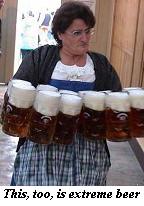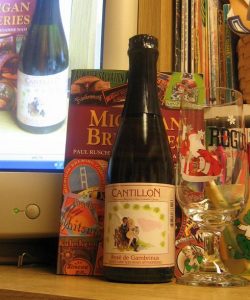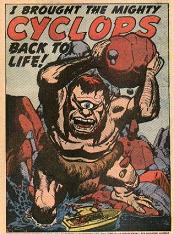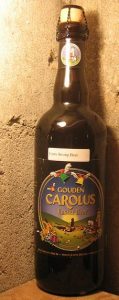 I had been planning on having this beer today as one small nod to the once busy task of brewing beer for holidays. Time was there were beers made for every saint’s day, every profession and every celebration of a stage in life. Now we are restricted to Yule and a few stragglers like this one for Easter. I had even complained about a lack of Easter brews when I was planning The Session last spring so I am at least grateful to have this one to try.
I had been planning on having this beer today as one small nod to the once busy task of brewing beer for holidays. Time was there were beers made for every saint’s day, every profession and every celebration of a stage in life. Now we are restricted to Yule and a few stragglers like this one for Easter. I had even complained about a lack of Easter brews when I was planning The Session last spring so I am at least grateful to have this one to try.
But before going there, I have read how Greg Clow over at Beer, Beats, Bites has uncovered calamity itself and has pointed out that the powers that be have censored the very label on this very bottle. I am quite innocent of all such understanding as my bottle kindly forwarded by the distributor, though slapped with the “Extra Strong Beer” label required by the Federal Food and Drug Act, is quite free from any thing dealing with the wickedness of the bunny.
Apparently, it is not so much this version of the bunny label, however, but previous versions that may have given the government some concern as is illustrated under the photos below. You will have to click to see the truth. I cannot bear it:*
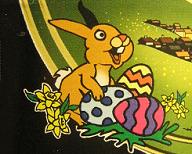

Frankly, the more curious thing to me is the legal basis for the authority for making such a decision to enforce the banning of the bunny. In my chapter in Beer & Philosophy, I wrote about quite a number of these ridiculous sort of rules and they were all based on some sort or actual regulation. Ontario’s Liquor Licence Act at clause 62.1(10.2) provides that the Lieutenant Governor in Council (aka some particular bureaucract) may make a regulation in relation to labels:
…governing the information that may or must appear on labels and containers of liquor sold or kept for sale at a government store…
The government store is defined as a store established under the Liquor Control Act which would be the LCBO. You see, generally the LLA governs the activiities of the AGCO while the LCC speaks to what the LCBO can do – make sense? Well, in any event, regulations can be made for labelling at the store – but, as Greg points out, these beers are not for sale “at a government store.” So, in addition to there not actually being a bunny reference, there must be some other power to control labels. Under the LCA, it states at section 3(1)(j) that “the purposes of the Board are, and it has power…to determine the nature, form and capacity of all packages to be used for containing liquor to be kept or sold…” That might be it. But then somewhere there has to be a written statement of standards…and one would expect that to be found in the LCBO’s Trade Resources. And there it is: at page three of the Simplified Canadian Label Requirements (warning: pdf!) it states that beer label may not have imagery which is “misleading or imply irresponsible use of the product”. Hmmm – not very detailed authority for banning a bunny but the introduction to the LCBO’s SCLR mentions other sources of rules, including the CFIA which has jusrisdiction under the the FDA. Under that Federal law, beer is food and there is law about the labeling of food at section 5(1) of the FDA:
No person shall label, package, treat, process, sell or advertise any food in a manner that is false, misleading or deceptive or is likely to create an erroneous impression regarding its character, value, quantity, composition, merit or safety.
Could it be that beer is not meritorious enough to be associated with a rabbit? No, I think that we need to find the regulation that actually details this bunny stuff. The Food and Drug Regulations happily define in law what beer is but while section B.02.130(b)(vii)
allows for “irish moss seaweed of the species Chondrus crispus” it does not allow at all for Oryctolagus cuniculus – the European rabbit. Could it be under Canadian law the rabbit is not so much banned as just not included?
Anyway, I am having mine tonight in celebration of the resurrection of Jesus 2025 years ago and, in a bit, I will note down what I thought of the beer inside the bunny-fouled packaging.
Later: the beer pours the colour of seasoned pine lumber with a wild rocky head that quickly subsides. At 10%, one has to be somewhat responsible so I have nipped away at this one consious that the bottle has the equivalent strngth of five and a half ounces of rum. But it does not stick out as much as it might despite this being a quite mild mannered pale ale. It is somewhat tripel-esque but things can merge somewhat stylistically at this strength. Safe to call it a Belgian Pale Strong Ale as it is each of those things.
There is plenty of aromatic graininess, a little bit of mild apple and honey in the malt, a bit of a musty side and a nice cream note to the heart of it. There is a bit of a bite that makes me think there could be some wheat in the grist, too, but I know nothing about these things. The brewery says that the particular twist offered by this beer is the addition of three herbs but they do not stand out to my taste, though there is definitely a twiggy aspect. They also say “served with pride it isdrunken with respect.” Perfect – just as I like to be. Plenty of BAer love. Too bad it’s blighted by that frigging bunny.
*…it’s more than I can bear to think of you seeing these…




